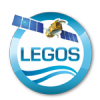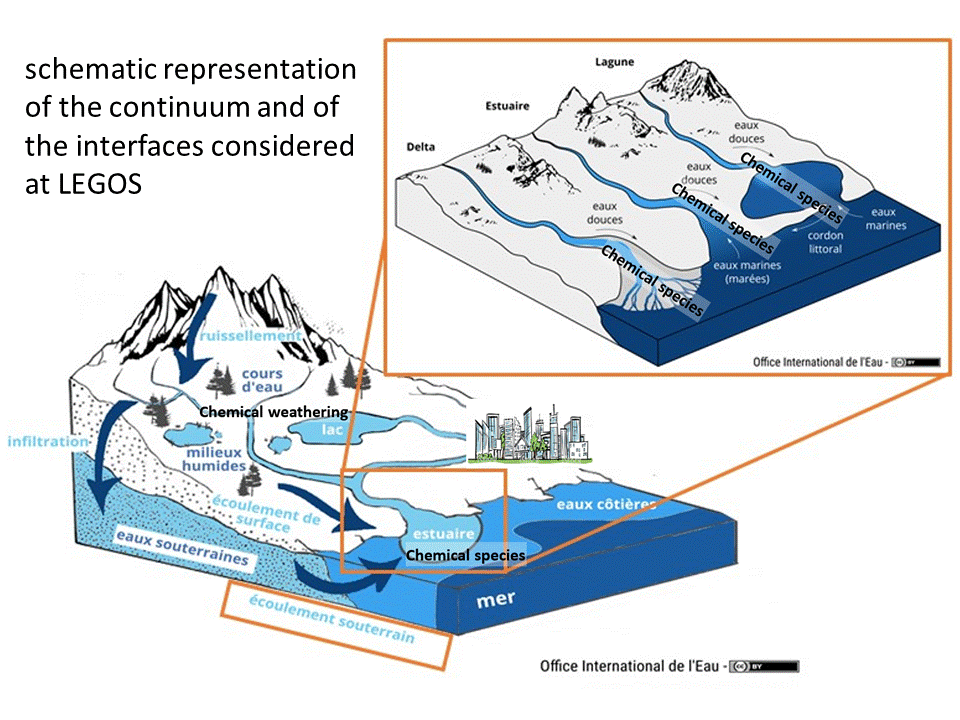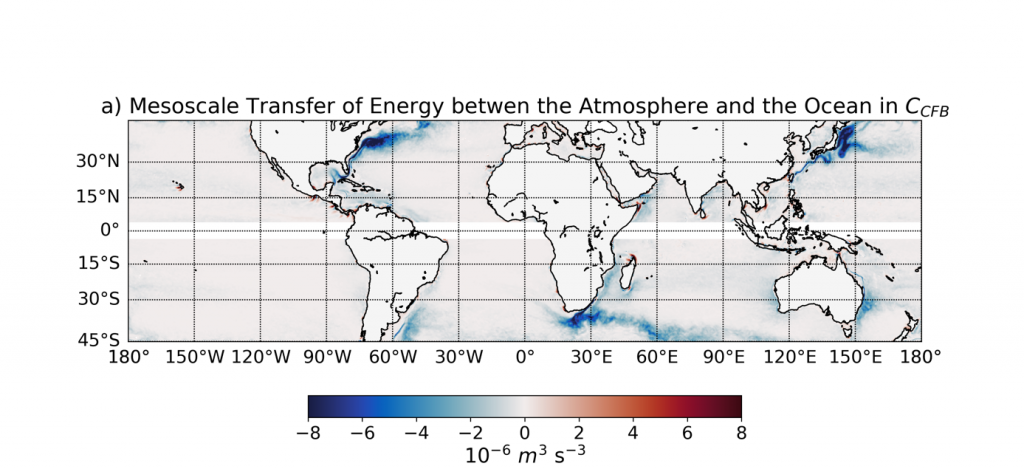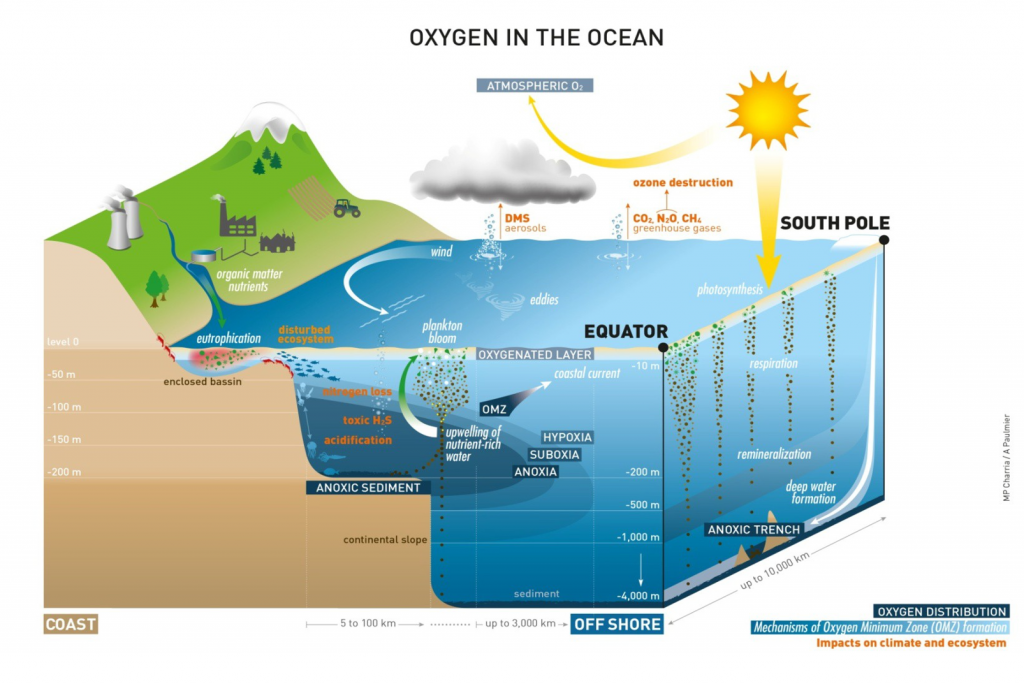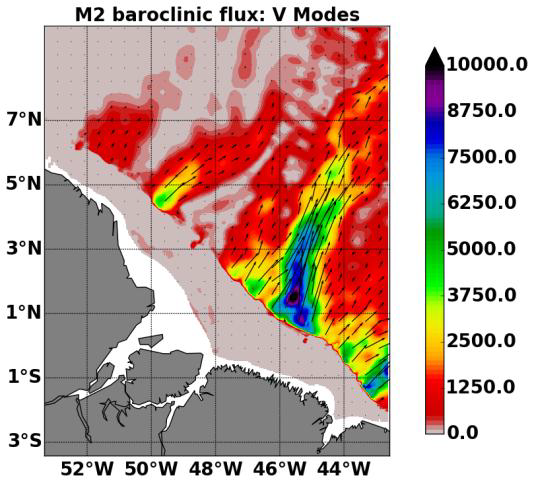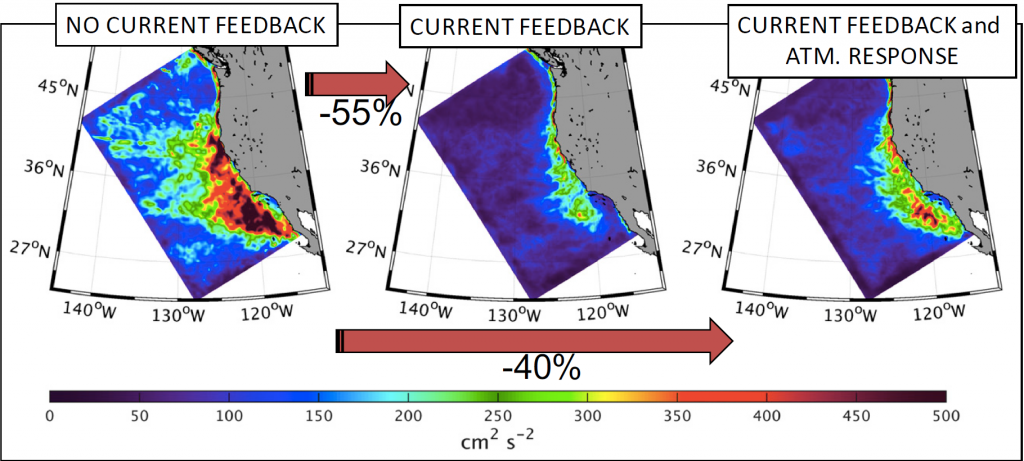Publisher: Direction – Updated on 31/03/2021
Continuum continent-shelf-offshore ocean
Contact : N. Ayoub, S. Biancamaria, C. Jeandel
The continent-ocean interface is made up of a set of intermediate and heterogeneous environments, the location of numerous transformations of water, matter, chemistry and biology, making their study complex. The complexity also stems from the wide variety of processes at play and their interactions depending on the geographical areas considered. The development of tools (satellite or field observations, modelling) and the growing interest of the scientific community in environmental issues, with a strong societal impact, are stimulating more studies on the continent-ocean interface.
At LEGOS, the combination of research in hydrology and oceanography makes it possible to understand the variability of all these combined environments and the processes that govern them by adopting the ‘continuum’ paradigm, i.e. by considering the different ‘zones’ of the interface (catchment area, estuary/lagoon/delta/groundwater sources, plateau, slope, deep ocean) as well as all the interactions that connect them. The challenges are to advance knowledge on still poorly understood processes and to develop transdisciplinary methodologies, ( i.e. connect hydrologyl and oceanography sciences, with physics and biogeochemical approaches).
Ocean Atmosphere Wave Coupling
Contact : P. Marchesiello, L. Renault
Interactions between the ocean and the atmosphere largely influence the Earth’s cli- mate and ecosystems at the level of ocean basins. The main modes of climate variability (e.g., Madden-Julian Oscillation, El Niño, North-Atlantic Oscillation) are ocean- atmosphere coupled modes. While climate models (GCMs) generally agree globally and are relatively realistic, there is a large regional dispersion or common biases. Part of those biases arise because of a poor representation of the regional oceanic, atmospheric and biogeochemical dynamics. Those biases have thus created a new line of research based on a regional approach to the interactions between the ocean and the atmosphere and aiming to understand and predict variability in key areas of the ocean. Thus, it has recently been demonstrated that at the regional scale, fine interactions between the ocean and the atmosphere can greatly modulate the variability and mean state of the ocean and its associated ecosystem.
Several LEGOS members are interested in topics related to the interactions between the Ocean, the Atmosphere and the Wave, this from an approach combining both numerical models and satellite data. The “Ocean-Atmosphere-Wave Coupling” axis aims at gathering the efforts of LEGOS in order to better understand the importance of the Ocean-Atmosphere-Wave coupling in the determination of the mean states and variabilities of the Ocean (physical and biogeochemical) and the Atmosphere as well as the exchanges between the two media.
Ocean deoxygenation resilience and sustainability
Contact : V. Garçon, A. Paulmier
If you can’t breathe, nothing else matters
The challenge?
The ocean has been losing ~2% of its oxygen (O2) content since the middle of the 20th century.
The issues?
Climate change prediction models are currently unable to correctly reproduce the distribution of this decline, particularly in tropical regions of the oceans. Global warming and natural variability each play a role that must be estimated with certainty.
Uncertainties in future projections from global models remain large, limiting the scope of adaptation strategies. Alternative approaches based on regional models combined with observation networks are needed to reduce these uncertainties and enable vulnerability and impact studies. This is one of the major challenges of WCRP and GOOS (World Climate Research Programme and Global Ocean Observing System).
So what?
The physiological performance of marine organisms depends on their ability to extract O2 from seawater, while there is a compression of marine habitats with less oxygenated space. Furthermore, small fluctuations in O2 can have a feedback on global biogeochemical cycles and climate.
The solutions?
Reduce greenhouse gas emissions to reduce warming.
For the coastal ocean, reduce nutrient inputs to the ocean.
The benefits?
Achieving the 7 societal goals of the United Nations Decade of Ocean Science for Sustainable Development (2021-2030): A healthy, resilient, sustainable, productive, transparent, accessible, clean, safe, predictable, engaging and inspiring ocean.
Tides, internal tides and associated interactions
Contact : A. Koch Larrouy, F. Lyard
Ocean tides make an important contribution to the global dynamics of the ocean, both in the deep ocean and in the continental shelf and coastal seas, or estuaries. In recent years, interest in their study and modelling has been vigorously renewed by the need for highly accurate corrections in altimetry and gravity satellite missions, and growing concerns about the impact of tides on ocean state and circulation, such as their role in vertical mixing.
Internal tidal waves, resulting from the interaction of the tide with the topography (slopes, seamounts, ridges), are responsible for the local intensification of tidal currents or density instability and have therefore been identified as a key process in ocean dynamics, in particular in the physical and biogeochemical fluxes of tracers. These waves and the associated mixing play an important role in the exchange of the ocean surface with the deep ocean and atmosphere. Characterisation of their dynamics is therefore essential for understanding their role in ocean circulation, climate and ecosystem structuring.
Our objective is the precise quantitative description of the tides by means of numerical modelling and the setting up of campaigns at sea to observe them and their multiple interactions (biogeochemistry, biology, circulation).
Meso and sub-meso scales
Contact : I. Dadou, R. Morrow L. Renault
Within LEGOS, many teams are working on mesoscale (~100 km) and submesoscale (~1-10 km) ocean processes. To improve our mutual understanding of these different processes, a scientific discussion group with members from several teams has been established at LEGOS in recent years and will continue in 2021-2025 to exchange and discuss scientific questions/ideas and related processes.
The scientific discussions of this axis are centred around key questions of the laboratory:
- How do mesoscale eddies, and their cascade of energy to larger or smaller scales, vary with regional, interannual and climatic variability?
- How is the air-sea-wave coupling modified by sub-/mesoscale dynamics and fine-scale fronts and what is the feedback on the dynamics in the open ocean and coastal regions (e.g. upwelling zones, western boundary currents)?
- What is the role of mixing resulting from (a)geostrophic eddy dynamics and internal waves/tides? (in common with the Tides/Internal Tides discussion group).
- What is the impact of fine-scale freshwater fluxes on mesoscale to submesoscale and ocean-atmosphere couplings (in common with the continuum discussion group)
- Physical-biogeochemical interactions and their response to the couplings studied above.
